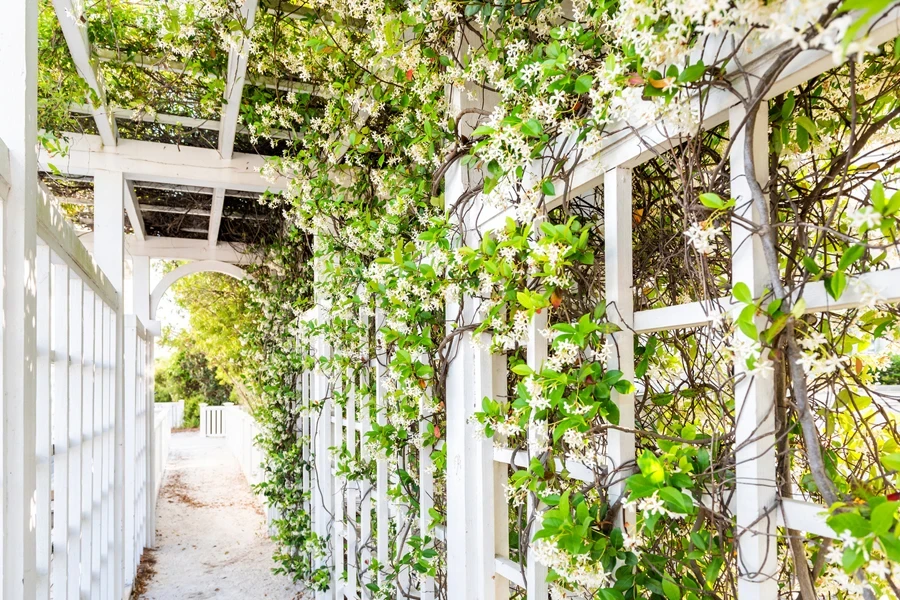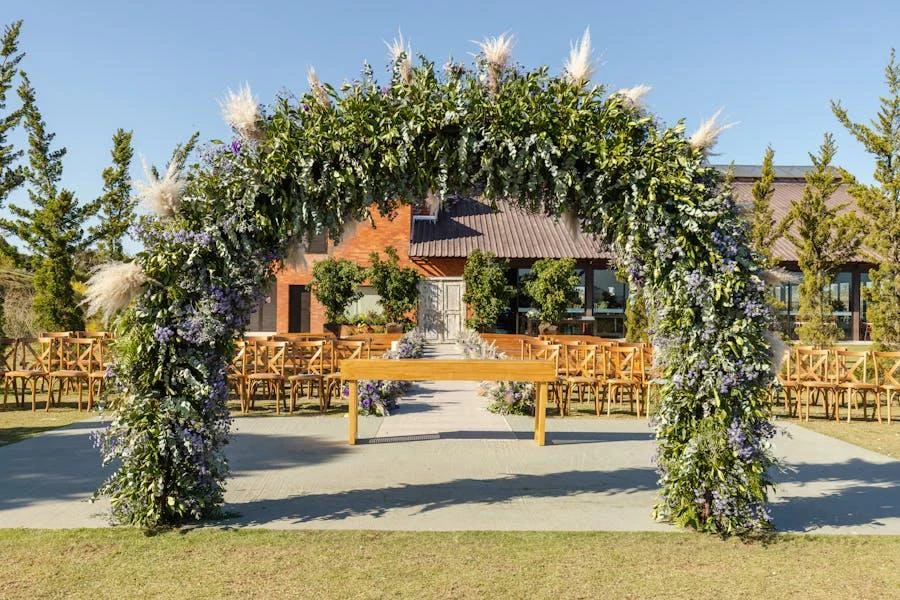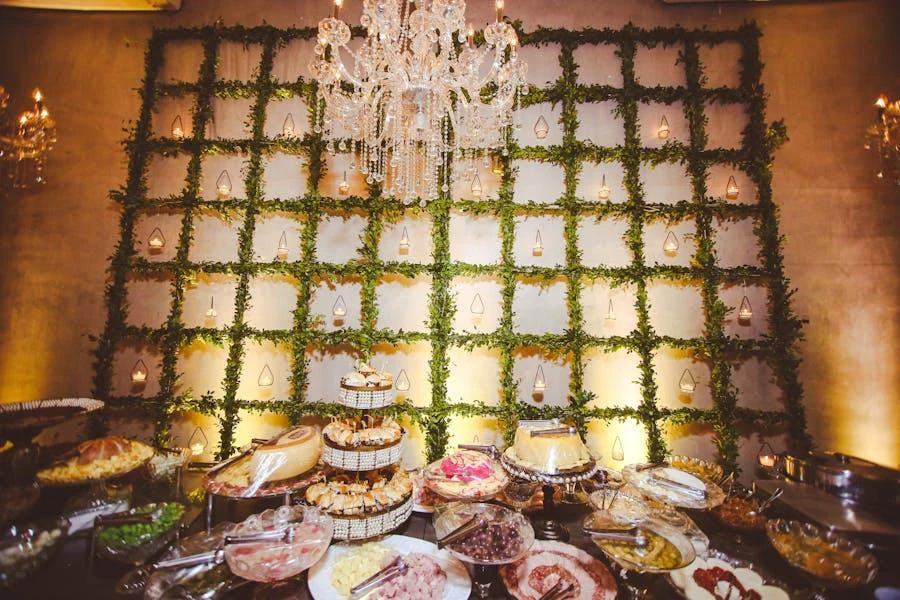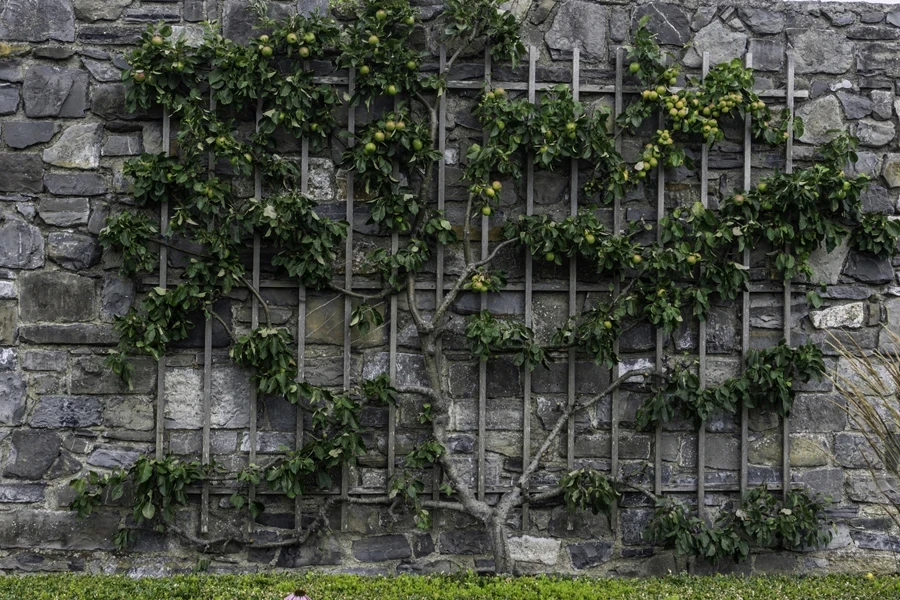The ruggedness of plants growing on compounds or garden spaces can displease homeowners. Many people would like a beautiful garden area on their compound without compromising the outlook. This optimum is problematic because it is difficult to dictate how a plant should grow while maintaining serenity and beauty in the environment.
Therefore, trellis is here to solve the problem. Agricultural trellising is training crops to grow along a specific supportive structure, such as metal or wood. A trellis is a frame made of metal or wood used to support climbing plants.
The trellising process requires patience and delicacy. Gently lift every stem and guide it onto the trellis structure. The process does not interfere with the plant’s natural growth pattern. If the plants are unwilling to cling to the trellis, gently attach the branches to keep them in place.
The Trellising method is not new; it has been around for centuries, and the ancient murals showed their use during the ancient Mediterranean.
This article will discuss the market trends for trellis and the 5 reliable trellis categories that businesses should consider.
Table of Contents
What is the global market size of trellis décor?
Top 5 reliable trellis categories and materials
Conclusion
What is the global market size of trellis décor?
Global demand for trellis and green wall decor has grown substantially over the previous years. The global green wall market size was USD 12005.44 million in 2024 and is expected to grow at a compound annual growth rate (CAGR) of 9.64% to reach USD 23466.87 million by 2031.
The trellis market is a specialized market within the gardening and landscaping industry. The industry mainly focuses on the distribution, installation, and production of trellis. Trellis helps support vertical plant growth and enhance the aesthetics of outdoor areas, bringing architectural charm and visual interest.
The trellis market is vital in filling the gardening need for a beautiful and adaptable way to improve outdoor living areas and patios. Trellis comes in various styles, materials, and dimensions, from classic wooden lattice structures to contemporary metal frameworks. Various trellis have their advantages and disadvantages.
The trellis market trends are increasing demand because of the growing popularity of outdoor and gardening living. The market solves homeowners’ problems by improving their gardens and outdoor areas. The demand creates more avenues for creativity in trellis materials, sizes, and design.
Market demand is also increasing because of the interest in growing sustainable and aesthetically pleasing landscapes. Innovation is propelling market expansion and material and design innovation.
There has been an increase in emphasis on space-saving, green living solutions, and urban gardening trellis for balcony areas. This trend requires both stylish and small vertical gardens. The space-saving gardening trellis is essential because of limited urban environment spaces.
Therefore, the market is experiencing a sales boom for small and fashionable trellis. There are different materials, configurations, and sizes available for homeowners to choose from.
Additionally, consumers are stressing over eco-friendly and sustainable materials for trellises. Manufacturers should consider examining biodegradable, recycled plastic options, and metal to minimize the environmental impact.
Environmental awareness impacts the trellis market, forcing manufacturers to consider creating them from biodegradable materials, recycled plastic, and sustainable metal alloys. These options are available to consumers who value green living.
Finally, integrating trellis with innovative gardening tools and automated irrigation systems is becoming trendy. Smart trellis have integrated sensors for optimal growth. The sensors track light levels, soil moisture, and temperature. These technological advancements are having a positive impact on the market. The sensors ensure that the trellis monitors the water condition and optimizes the growth potential.
Top 5 reliable trellis categories and materials
1. Pergola trellis

Pergolas are one of the trellis categories. A pergola is a large open structure designed to provide climbing plants with shade and space. The structure offers advanced support and elegance to outdoor plants. Pergolas are typically classy and exquisite, with a large design that can accommodate various plants. They have inbuilt supporting posts arranged to create a roof-like structure on top.
The propped-up roof can shade the structure, which looks like a shaded canopy without the open roof design. Additionally, pergola structures are wood, but other varieties use different materials.
The pandora trellis replicates the magical avatar pandora look, especially with purple and white wisteria. A pergola can also be an outdoor addition without adding plants, giving a modern villa look.
2. Garden gazebo trellis

A garden gazebo is a structure suited for a view. A gazebo is an outdoor structure installed for decor and shade purposes. The shape is usually octagon and provides an open and sturdy shelter with an open and airy space.
Transforming a pergola design into an actual gazebo can transform a regular gazebo into a plant trellis. Consider leaving the lattice design and side open frame intact, then installing a covered roof while leaving an arch entryway.
Depending on the budget, the garden gazebo trellis can have a pitched roof. Surround the gazebo with vines and ornamental flowering vines. Add extra interior plants and colorful garden furniture for a popular lounging garden gazebo.
3. Arbor trellis

Arbor trellis look like a smaller version of pergolas. However, they have a lattice-like pattern on the roofs and both sides. The arbor structure is a unique half-styled tunnel design. The primary material for arbor trellis is wood, but others are made from other materials.
Arbor trellis have illustrative designs that add to their aesthetic appeal. They are applicable at the entrance, garden walls, or prominent areas and can act as a therapeutic walkway to a garden, as the lattice pattern adds to its functionality and pattern.
Adding climbing plants requires a side lattice, especially for vegetables and legumes.
4. Lattice trellis

Lattice trellis are vertical or horizontal metal or wooden panels with a lattice pattern supported on column frames. They come in various styles, such as wall-mounted or floor-standing ones.
Some designs allow plants to attach and climb them. The possibilities with lattice trellis are endless, especially regarding design and styles. Additionally, they are functional; people can design them by highlighting the contrasting plant textures and colors. The lattice trellis accentuates the plants and improves their appearance.
5. Flat trellis

Some people categorize the flat trellis the same as the lattice trellis. The primary materials used are wood, plastic, or metal. What differentiates it from the lattice trellis is that it offers a variety of patterns, such as revealing or opaque ones.
A flat trellis can be anchored or freestanding on the wall. Their stems and panel designs can be ornamental pieces that add to the garden with or without attaching vines or plants. The flat trellis adds dramatic design and textural contrast for a modern ornamental garden.
Conclusion
Trellis categories offer a change of scenery in backyards. They are simple yet transformative. Trellis offers the opportunity for plant lovers to enjoy their hobby while maintaining the serenity of their garden.
With the increase in demand for trellis, retailers and business owners can continue to expect an increase in revenue. It is an outdoor extravaganza that has been around for a long time and will continue to be profitable.
Retailers should consider restocking on trellis to appeal to their target market.
For all trellis materials decor, visit Alibaba.com.



